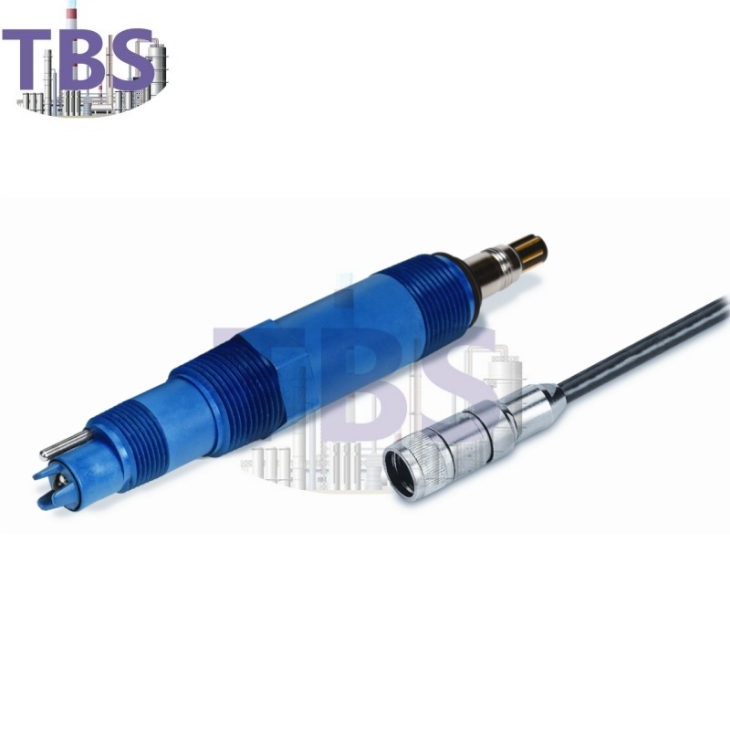Rosemount 3900 General Purpose pH/ORP Sensor with Variopol (VP) Connection
SMART enabled for pH measurements
Built-in solution ground for advanced diagnostics
Operates in sub-zero temperatures down to -10°C (14°F)
Enhanced performance and increased life with cracking resistant glass
How to use the pH sensor
In use, the PH sensor is usually added with a stainless steel protective cover, and then inserted into the fermented tank. Most pH sensors have a temperature compensation system. Because the electrode content is constantly changing with the use time or high temperature sterilization, it is necessary to calibrate before each batch of fermentation sterilization operations, that is, the standard PH buffer is calibrated. Generally, the measurement range of the pH sensor is 0 to 14, the accuracy is ± (0.05 ~ 0.1), the response time is several seconds to tens of seconds, and the sensitivity is 0.1.
Calibration
The sensor must be calibrated before use, which is a step -by -step operation of sterilizing the fermented tank. The calibration of the sensor is performed outside the fermentation tank, and the PH electrode is not soaked to the appropriate container containing one or more standard buffer for calibration. These operations are performed at the operating temperature of the fermentation tank. The pH electrode needs to be connected to the pH used during fermentation. The calibration device of the pH can be adjusted according to the conventional PH calculation steps. Due to the difficulty or impossible when re -calibrating during the fermentation process, the calibration control of the pH measurement can be fixed to avoid occasional offset in the experiment. Many commercial instruments provide some fixed screws
Sterilize
After calibration, the sensor should be inserted into the fermentation tank and sealed. When the fermentation tank sterilizes, the pH connection is generally removed (when the high -pressure sterilization cooker is sterilized), and the pH sensor starts working after sterilization. There are also experimental operators to disinfect the pH sensor alone with alcohol (that is, not put into a sterilization cooker), mainly to extend the service life of the sensor. Then insert the sensor immediately and seal it in the tank.
It must be pointed out that this process may be stained. Although some reports are not a problem to use this step in the study. The specific method is as follows: Put the sensor and add a suitable accessory to make the PH probe easily installed by the top disk of the fermentation tank, and then place it at least LH in waterless alcohol. The probe and accessories must be very clean, and the immersion of the probe should not be higher than the accessories. *** should quickly transfer the sensor to the fermented tank of the pre -extinguished bacteria, it has been connected to the air supply system, and the air in it has begun to flow.
Calibration check
In the process of sterilization or use, the calibration is likely to be offset. For a good sensor, this offset will not exceed 0.2 units. However, some researchers still recommend calibration or re -calibration after the fermentation tank sterilizes. At present, there are such systems suitable for large fermentation tanks, which can completely remove the sensor completely, and then partially inserted it into the calibration buffer for calibration.
In the scale of the laboratory, it is necessary to completely remove the sensor and use the aforementioned chemical processing method to re -disinfect. A better way to check a suspicious calibration in the laboratory is to sample the fermentation solution, and measure the pH value of the external measurement of the external measurement of the fermentation tank as soon as possible. Because the cells are continuously metabolized under the condition that the cells are constantly changing (for example, the consumption of oxygen and matrix in continuous cultivation), if the cushioning performance of the medium is poor, the pH can change in a few minutes. Calibration of sensors.
Specifications
Operating Temperature
–10° to 100°C (14° to 212°F)
Max. Operating Pressure
Maximum Pressure: 790 kPa [abs] (100 psig) at 100°C (212°F)
Materials of Construction
Stainless steel, glass, Teflon®, polyphenylene sulfide (PPS), EPDM and silicone (If selecting the ORP sensor, an additional wetted material is Platinum.)
Process Connection
Front facing: 3⁄4" and 1" MNPT; Rear facing: 1" MNPT
Features
Extended pH sensor/ORP sensor life and protection against poisoning ions using a double junction reference
Enhanced performance and increased life with cracking resistant glass
Maximum chemical resistance provided by a rugged polyphenylene sulfide body
Operates in sub-zero temperatures down to -10°C (14°F)
Built-in solution ground for advanced diagnostics
pH/ORP sensor body features a one-piece construction with both front facing and rear facing process threads
¾” and 1” MNPT process connections to meet a variety of application installation requirements
Variopol (VP8) cable connection option, for quick cable-to-sensor release, eliminates cable twisting
SMART enabled for pH measurements









